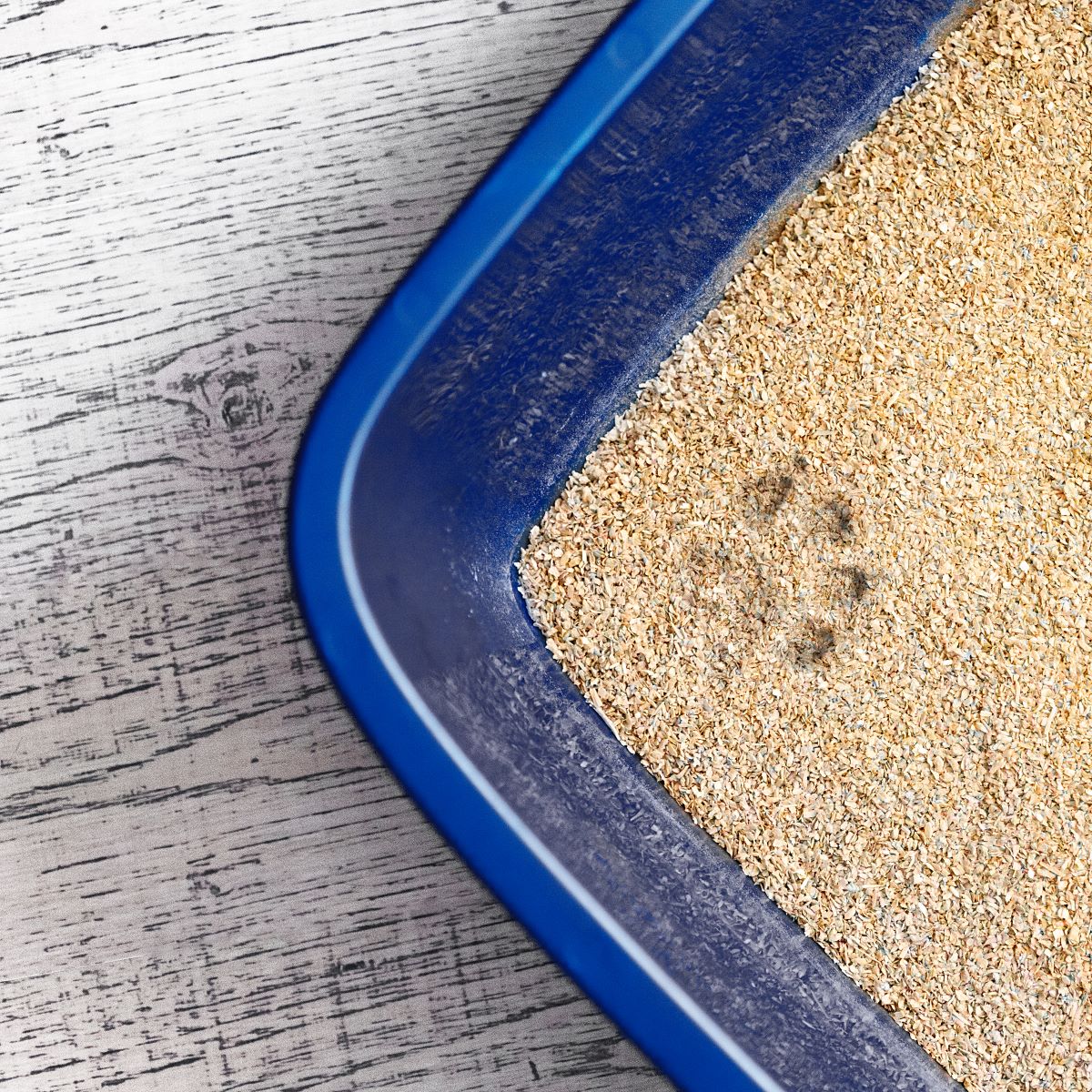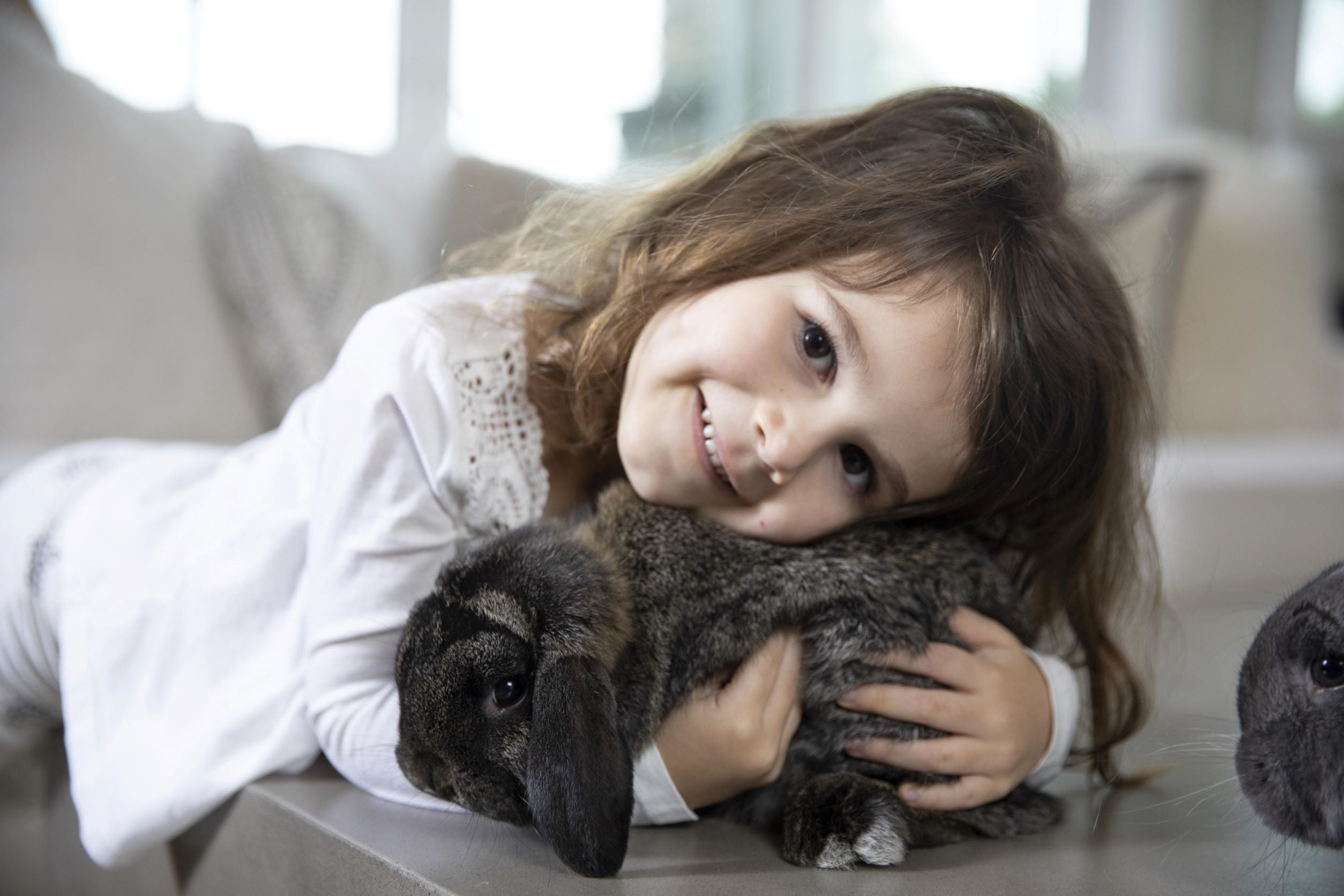Feline Fascination: Keeping Your Curious Cat Away From Your Fish Tank
Photo by Ludmilahaikal from Deposit Photos
With their agile grace and insatiable curiosity, cats often find themselves captivated by the most intriguing of household spectacles: the fish tank. This shimmering, watery world, alive with movement and color, presents an irresistible allure to our feline friends. It's a meeting of two different realms, each with its own set of rules and inhabitants, yet existing side by side in our living spaces.
However, this fascination is not without its challenges. Balancing a cat's natural instincts with the safety and well-being of both pets requires understanding and patience. It's about creating harmony within a shared environment, ensuring curiosity doesn’t lead to consequences.
Why Cats Are Drawn to Fish Tanks
Cats are born hunters. The movement of fish swimming back and forth is irresistible because it sparks their innate hunting instincts, even though a thick glass barrier stands in the way. It triggers their predatory instincts, making them believe they've found potential prey. This doesn't mean your cat is always in "attack mode"; rather, they're engaging in a natural behavior that's part of being a cat. It’s a game of chase where the fish always seem just out of reach, providing a mental workout that keeps your cat both entertained and mentally stimulated.
By understanding these behaviors, we're becoming better pet parents, equipped to create a living space that respects the needs and safety of all our pets. It's not just about keeping the cat away from the fish tank; it's about understanding why the tank is so appealing to them in the first place. This insight allows us to find creative solutions to satisfy their curiosity without risking the well-being of our aquatic friends.
The Risks of Feline Fish Fascination
When your cat's fascination turns into an obsession, it might spell trouble for everyone involved. Imagine a scenario where your cat takes a closer look and accidentally knocks over the fish tank. This could lead to a messy, wet disaster in your home, not to mention the potential harm to your fish and even injury to your cat from broken glass or spilled water.
Understanding the risks is crucial. The stress of a looming predator can lead to health issues for the fish, making them more susceptible to illness. For cats, the allure of the tank's water might tempt them to drink, but it's often treated with harmful chemicals. There's also the chance they might try to 'fish,' putting both parties at risk of injury.
Creating a safe and harmonious living space means recognizing these risks and taking steps to prevent them. This isn't about dampening your cat's curiosity but ensuring their interactions with the fish tank are safe and non-disruptive. With some strategic planning and understanding, you can maintain the peace and keep the curiosity at a safe distance.
Tips and Tricks for Keeping Harmony in the Household
As we navigate the challenge of keeping our curious cats away from our fish tanks, it's essential to approach the situation with a blend of understanding, creativity, and preventive measures. Let's explore how you can keep harmony in your household, ensuring that every member feels safe and content, whether finned or furred.
The Right Fish Tank Choice and Placement
The location of your aquarium can significantly influence your cat's interest in it. Placing the tank in a low-traffic area, away from your cat's usual haunts, can make it less of a focal point. Additionally, choosing the right size is crucial. For example, if you have Siamese fighting fish, understanding recommended tank sizes for Betta is critical. It ensures the well-being of your fish while also making the tank less appealing to a cat. More so, a well-maintained aquarium is less likely to undergo rapid changes that might attract your cat's attention.
Reinforcing Tank Security
A secure fish tank is your first line of defense against a curious cat. Investing in a sturdy aquarium stand can deter even the most determined feline. The stand must be robust enough to support the full weight of the aquarium, minimizing the risk of tipping. Additionally, securing the tank's lid with locks or heavy covers can prevent your cat from gaining access. This keeps your fish safe and prevents potential spills and accidents.
Creating a Distraction-Friendly Environment
Photo by Emily Crawford from Unsplash
Cats crave engagement; offering them alternatives to the fish tank can quench their curiosity. Introducing interactive toys that simulate the thrill of the hunt can redirect their focus away from your aquarium. Complement this with sustainable cat litter in their personal spaces, creating a comfortable and eco-friendly environment for them to retreat to after play. These steps keep your cat amused and champion the use of environmentally friendly products.
Utilizing Vertical Spaces
Cats naturally seek high vantage points, and accommodating this preference can help keep them away from your fish tank. Installing cat shelves or providing a cat tree made from recycled or sustainably sourced materials allows them to observe their territory from a safe, approved distance.
Behavioral Training Techniques
Teaching your cat that the fish tank is off-limits through positive reinforcement is a gentle and effective approach. Rewarding them for staying away from the tank reinforces good behavior without resorting to negative reinforcement. For those interested in a more structured training approach, clicker training can be useful. It involves using a sound to mark desirable behavior, immediately followed by a reward, helping your cat understand the boundaries around the fish tank.
Engaging Your Cat's Senses
Offering your cat other forms of entertainment can divert their focus from the fish tank. Window perches allow your cat to watch the world outside, safely satisfying their curiosity. Scented toys, especially those infused with catnip or valerian root, can captivate their sense of smell, providing an alternative source of stimulation.
Wrapping Up
In our homes, where the fish tank's silent world meets a cat's curious eyes, we find a unique harmony. It's about creating a space where every finned or furred pet thrives together. This journey isn’t just about setting boundaries; it’s about weaving a tapestry of life enriched by our diverse companions. By fostering an environment of understanding and respect, we celebrate the vibrant, peaceful coexistence within our walls, turning challenges into opportunities for connection and care
Read MoreSmart Solutions for Pet Owners: Navigating the Digital Shift in Animal Care
Photo by Pacto Visual on Unsplash
The digital shift in animal care offers smart solutions for pet owners, providing tools and technologies to improve the well-being of their furry friends. A study by the American Pet Products Association (APPA) found that 67% of U.S. households, or about 85 million families, own a pet, highlighting the significant potential market for digital pet care solutions (APPA, 2021-2022 National Pet Owners Survey).
Building on this, a recent report by Grand View Research indicated that the global smart pet market size was valued at USD 5.7 billion in 2020 and is expected to grow at a compound annual growth rate (CAGR) of 24.3% from 2021 to 2028. This growth is driven by the increasing adoption of smart devices and apps for pet tracking, monitoring, feeding, and entertainment, demonstrating how technology is being leveraged to enhance the pet ownership experience (Grand View Research, "Smart Pet Market Size, Share & Trends Analysis Report," 2021).
1. From Feeding to Finding: How Technology Is Simplifying Pet Management
In recent years, technology has become integral in simplifying pet management, from feeding routines to locating missing pets. This section will delve into how digital tools and applications are reshaping pet care practices.
In today's interconnected world, the integration of technology into our daily lives is inevitable, extending its benefits to pet care and management. Recent statistics reveal that approximately 67% of U.S. households, or about 85 million families, own a pet, showcasing the significant role pets play in our lives (Source: 2021-2022 National Pet Owners Survey conducted by the American Pet Products Association). This widespread pet ownership underscores the growing need for innovative solutions to improve pet care, with technology offering a myriad of tools aimed at enhancing the health and safety of our furry friends. Among these technological advancements, QR codes have emerged as a pivotal tool in pet management, streamlining the process of identifying and safeguarding pets.
Automated Feeding Systems
Automated feeding systems have transformed the way pet owners manage feeding schedules, ensuring pets receive the right amount of food at the right time. These smart feeders allow pet owners to maintain consistent feeding routines, even in their absence, by dispensing pre-determined portions of food according to a set schedule.
The advantages of using automated feeding systems include not only maintaining a healthy diet for pets but also alleviating the stress of daily feeding responsibilities for pet owners. With features such as remote control operation through smartphone apps, these systems provide a convenient and reliable solution for pet care.
Remote control of feed portions and timing
Consistent feeding schedules
Adjustment features for diet management
Notifications and monitoring via smartphone apps
Digital Health Monitoring
Wearable technology has expanded into the pet industry, offering devices designed to monitor pet health. These gadgets track a pet's activity levels, sleep patterns, and more, providing valuable insights into their well-being. By identifying potential health issues early, these devices can significantly improve a pet's quality of life.
The impact of digital health monitoring devices on pet care cannot be overstated. They not only facilitate early detection of health concerns but also encourage a more active lifestyle for pets, contributing to their overall health and happiness.
Activity and sleep tracking
Early detection of health issues
Encouragement of a healthy lifestyle
Easy access to health data for veterinarians
QR Code Innovations
The advent of QR codes in pet management marks a significant leap forward in ensuring the safety and well-being of pets. QR code tags for pets can be attached to pet ID tags, providing instant access to a pet's medical history and contact information. This feature is especially crucial in the event that a pet goes missing, as it allows for quick identification and reunification with the owner.
QR codes stand out for their ease of use and the comprehensive information they can store. By scanning a QR code with a smartphone, anyone can access detailed information about a lost pet, facilitating a faster and safer return. Furthermore, pet owners can easily update their pet's profile with current medical information and contact details, ensuring the QR code always provides the most relevant data.
Quick access to a pet's medical history and contact information
Simplified process for updating pet profiles
Enhanced security and peace of mind for pet owners
Increased chances of reuniting lost pets with their owners
In conclusion, the integration of technology into pet management, especially through the use of QR codes, offers a modern solution to age-old concerns regarding pet safety and health. By leveraging these innovations, pet owners can enjoy greater peace of mind and ensure their beloved companions receive the best possible care.
2. Mobile Applications and Online Platforms: Connecting Pet Owners with Veterinary Care
In the realm of pet healthcare, technology plays a pivotal role in enhancing the communication between pet owners and veterinary professionals. Mobile applications and online platforms have emerged as key tools in bridging the gap, providing seamless access to a range of veterinary services. From virtual consultations to efficient appointment scheduling, these digital solutions offer convenience and peace of mind to pet owners, ensuring their beloved companions receive the care they need without delay.
These platforms not only facilitate direct communication with healthcare providers but also provide pet owners with valuable resources such as access to medical records and educational content on pet health. This digital shift towards proactive pet care is supported by:
Virtual consultations for prompt medical advice
Easy scheduling of veterinary appointments
Access to pet medical histories and records
Online communities for peer support and advice
3. Advancements in Training and Behavior Management
Technological progress has also made its mark on pet training and behavior management, introducing a variety of tools that assist in cultivating positive habits. Interactive applications and gadgets have become invaluable for pet owners seeking to engage their pets in mentally stimulating and physically rewarding activities. These innovative solutions offer interactive learning experiences that reinforce positive behavior, making training both effective and enjoyable for pets and their owners alike.
Among these technological aids are:
Technology-driven toys and games for mental and physical stimulation
Online courses offering structured training programs from home
4. Sustainability and Eco-friendly Pet Care Solutions
The push for sustainability has extended into the pet care industry, with digital platforms leading the charge in promoting eco-friendly practices. Accessible technology has made it easier for pet owners to discover and purchase sustainable products that reduce environmental impact without compromising on quality or convenience. Moreover, digital initiatives aimed at recycling pet-related products further contribute to a more sustainable approach to pet care, aligning with broader environmental goals.
Key aspects of this sustainable shift include:
Biodegradable waste bags and eco-friendly toys
Sustainably sourced, natural, biodegradable cat litter such as okocat
Digital platforms that facilitate recycling of pet products
5. Thoughts on the Future of Pet Care Technology
As we look towards the future, it's clear that technology will continue to play a crucial role in the evolution of pet care. Current trends suggest a trajectory towards even more personalized and efficient pet management solutions, driven by advancements in technology. The potential for new innovations to simplify pet care routines and enhance the overall quality of life for pets and their owners is vast. Staying abreast of these developments is essential for anyone looking to provide the best possible care for their pets, highlighting the importance of ongoing engagement with the latest in pet care technology.
6. The Significance of QR Codes for Pets
QR codes have transformed the way we interact with various services and products, and their application in pet care is no less significant. These two-dimensional barcodes can store a wealth of information accessible with just a quick scan using a smartphone. This section delves into how QR codes can be a smart solution for pet owners.
How to Use QR Codes for Your Pets
QR codes can be employed in numerous ways to ensure the safety and well-being of pets. Here are some practical applications:
Identification Tags: Replace traditional pet tags with QR code tags. These can store more than just your contact information, including medical records and dietary needs.
Lost Pet Posters: Create lost pet posters with a QR code linking to a webpage with information about your missing pet, including pictures and how to contact you if found.
Medical Records: Keep your pet's medical history easily accessible by linking it to a QR code. This can be invaluable in emergencies.
Training and Care Information: Share training manuals, dietary guidelines, or care instructions with pet sitters or new pet owners.
Implementing QR Codes for Pet Safety
Implementing QR codes into your pet's life can greatly contribute to their safety and your peace of mind. Here are steps to get started:
Create a QR Code: Many free online tools allow you to create QR codes that link to online content. For example: QR Code Generator for Pet ID Tags.
Attach the QR Code: For identification purposes, attach the QR code to your pet's collar. Ensure it's waterproof and durable.
Inform Others: Educate family, friends, and pet caretakers about how to use the QR code. A quick scan should give them all the information they need.
By integrating QR codes into pet care, owners can take advantage of a modern solution that enhances the safety and well-being of their beloved animals. This technology not only simplifies access to vital information but also provides a direct link to lost pets' recovery efforts. As pet ownership continues to be a valued part of many families' lives, utilizing QR codes represents a smart step forward in pet care and management.
QR codes offer pivotal advancements in pet management, serving as essential tools for ensuring the safety and health of pets. Their application in ID tags allows quick access to vital information, such as a pet's medical history and owner contact details, facilitating swift action in reunifying lost pets with their families. This technology not only enhances the efficiency of pet management by simplifying the process of updating pet profiles but also significantly contributes to the peace of mind of pet owners. Through QR codes, the link between digital innovation and practical application in pet care is evident, marking a significant stride towards more secure and responsive pet management practices.
Read MoreGive Your Cat the Purrfect Green Holiday: 10 Eco-Friendly Gift Ideas
Looking for eco-friendly holiday gifts for your cat? This list has 10 natural, biodegradable products to delight your furry friend this season, like catnip toys and scratching posts.
Read MoreHow to Keep Your Cat's Coat Healthy and Minimize Hairballs
Is your cat’s coat dull? Hairballs galore? Don’t worry - in this article, we’ll outline everything you need to know about keeping your cat's coat healthy!
7 Compelling Reasons to Choose Paper Packaging Over Heavy Plastic for Your Cat Litter
The battle between paper and plastic packaging is ongoing, but for eco-conscious consumers, paper often comes out on top. Here are seven compelling reasons why you should consider opting for paper packaging for your cat litter.
1. Environmentally Friendly:
- Paper is biodegradable and compostable, making it a sustainable choice.
- Plastic takes hundreds of years to decompose, contributing to environmental pollution.
2. Reduced Plastic Pollution:
- Choosing paper helps reduce the demand for single-use plastics.
- Plastic waste, especially in the oceans, poses a significant threat to marine life and ecosystems
3. Renewable Resource:
- Paper is made from trees, which can be replanted and harvested sustainably, and so is okocat natural litter!
- Plastic production relies on fossil fuels, a finite and environmentally damaging resource.
4. Energy Efficiency:
- The production of paper packaging consumes less energy compared to plastic.
- Lower energy consumption results in a smaller carbon footprint.
5. Recycling Ease:
- Paper is highly recyclable and widely accepted in recycling programs.
- Plastic recycling is more complex, and not all types are equally recyclable.
6. Versatility:
- Paper packaging can be adapted for various products, from food to cosmetics and more.
- Plastic packaging often faces limitations due to its non-biodegradable nature
7. Aesthetic Appeal:
- Paper packaging offers a natural, rustic, and eco-friendly appearance.
- Many consumers are drawn to the eco-conscious image conveyed by paper packaging.
In summary, choosing paper packaging over plastic is a small but impactful step toward a more sustainable future. It reduces plastic pollution, encourages the use of renewable resources, and supports energy-efficient production methods. Moreover, it's easy to recycle and offers versatility, making it a practical choice for a wide range of products such as natural cat litter. So, next time you're faced with a packaging choice, consider the positive impact of paper packaging on the environment and make the eco-friendly choice.
Read MoreFilter - Key Words








 email us
email us